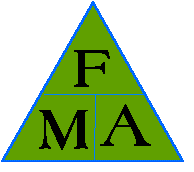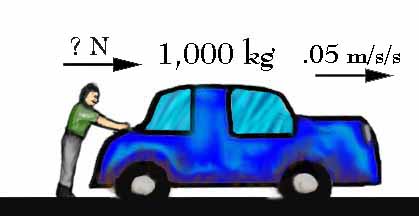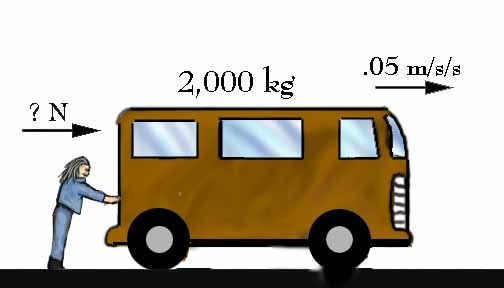


Newton's Second Law of Motion states that an object accelerates in the direction an unbalanced force points. Very simply, when you apply a force to an object (mass), the object will accelerate in the direction of the stronger force.
Everyone unconsiously knows the Second Law. Everyone knows that heavier objects require more force
to move the same distance than do lighter objects. The Second Law, however, gives us an exact
relationship between force, mass, and acceleration.
Using the following formula we can calaulate the amount of force needed to accelerate a certain mass.


Below is an example of how Newton's Second
Law works:

Mike's car, which weighs 1,000 kg, is out of gas. Mike is trying to push the car to a gas station, and he makes the car go 0.05 m/s/s. Using Newton's 2nd Law, you can compute how much force Mike is applying to the car. (hint: since you are trying to find force, use the equation F=MA). Now that you are done, check your answer.

BOB's van, which weighs 2,000 kg, is out of gas. BOB is trying to push the car to a gas station, and he makes the car go 0.05 m/s/s. Using Newton's 2nd Law, you can compute how much force BOB is applying to the car. (hint: this problem is just like the previous one). Now that you are done, check your answer.